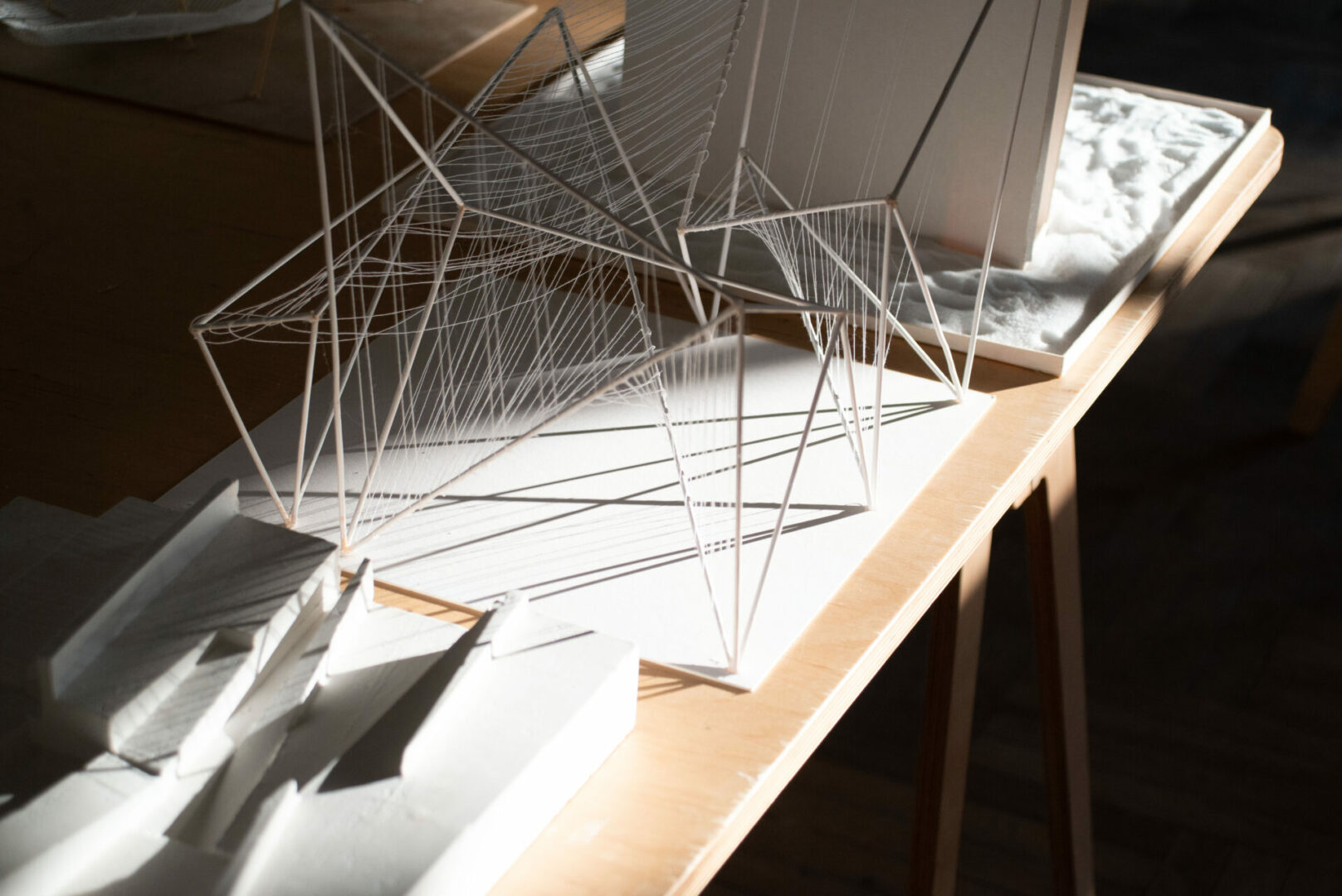Collective work:
- research,
- analysis,
- mapping,
- planning.
Supporting lectures.
15 ECTS
apply
At the heart of this program will be the multi-faceted, multi-scalar attention to issues of re-thinking the urban re-development and re-building of Ukrainian settlements, towns, and cities. The program aims to shift the professional paradigms of architects and professionals coming from interdisciplinary design-related fields, towards urban thinking with a focus on the Ukrainian context of post-war recovery.
The future generation of urban professionals is considered to have a strong mediator role and become a facilitator in planning and decision-making processes across different levels. The program intends to provide the necessary competence for such roles.
The focus of the Master’s program is on a broad urban discourse and in maximum proximity to Ukrainian realities.
The themes of the integrated design studios will be specific cities, communes, villages, and neighborhoods. The studio work is planned in direct cooperation with representatives of these urban formations.
The first part of the first semester studio is dedicated to research, analysis, mapping, and the creation of a collective spatial strategy (masterplan).
The program allows you to choose a track in architecture or urban design from the second semester of the first year.
The program is designed in such a way that the theoretical modules provide tools that can be immediately applied in the studio work. We see that the ideas and projects produced by the studio could be used by municipalities for urban development and recovery of the urban environment.
Important modules shaping the program will consist of: theoretical courses on architecture and urbanism, methodologies of professional practice, prefabrication techniques, circularity processes, participatory processes, and urban political processes.
An integrated educational approach brings together critical, theoretical and strategic skills together with spatio-structural design as well as provides an understanding of implementation processes.
Collecting necessary knowledge across different disciplines, students of the Master’s Program will integrate and apply them directly within studio projects. It is essential that the studio projects are conducted around real case studies, with municipalities and other urban actors involved. Therefore, future graduates are expected to apply their gained competence in such roles as urban designers, urban planners, urbanists, and project developers.
The duration of the master’s program is 2 academic years. It is also possible to study for 1 year, in which case at the end of the year you will receive a certificate with a list of courses you have taken, rather than a master’s degree. The cost of studying for one year in a two-year master’s program is 100 thousand UAH, the cost of a one-year certified program is 115 thousand UAH.
TYPES OF SCHOLARSHIPS
ACADEMIC
A scholarship that can be obtained during the Building Back Better winter workshop (details coming soon) or during early application for a master’s program:
– 15% discount for all participants of the winter workshop;
– 15% discount for all applicants who apply for the master’s program by February 28, 2025;
– 10% discount for all applicants who apply for the master’s program by April 30, 2025.
SOCIAL AND ACADEMIC
Scholarships in the amount of 50% are granted to students who have a strong motivation to study and social circumstances that make it impossible to pay the full tuition fee:
WHAT DOCUMENTS ARE REQUIRED TO APPLY FOR A SCHOLARSHIP?
– Comprehensive project studios. Additional modules on architectural technologies, theory and methodology of urban history and practice related to the studio topics.
– The main topics of the studio are architectural and urban projects focused on urban renewal and transformation of the urban environment.
– The program provides opportunities for summer internships, employment, and independent study.
– Integrated design studios for the development of graduation projects.
Design studios of architecture and urban design
Digital tectonics, prefabricated structures
Energy and environmental infrastructure, sustainable urban development
Theory and history of urban form
Functional-spatial and tactical urbanism
Theories of space and public space
Urban and housing policy and management
Research methods and tools for urban analysis
Methods of public involvement (participatory approach)
Professional-oriented practice
Link for the application form is here.

The admissions committee will review all applications equally. Admission is a competitive process limited to a maximum of 30 full time place per year.
Attention! The admission procedure will be based on the “Rules of Admission 2025”.
Applicants to the M.A. are evaluated based upon successful delivery of all required application materials and are evaluated with regard to their demonstrated skills and abilities in three main areas:
→ Statement of Purpose/Motivation Letter
→ Portfolio. The portfolio provides you the opportunity to showcase your selected work and creative abilities and design thinking and skills.
→ Academic record and experience demonstraed in their CV.

The admissions committee will review all applications equally. Admission is a competitive process limited to a maximum of 30 full time place per year.
Attention! The admission procedure will be based on the “Rules of Admission 2024”.
Applicants to the M.A. are evaluated based upon successful delivery of all required application materials and are evaluated with regard to their demonstrated skills and abilities in three main areas:
→ Statement of Purpose/Motivation Letter
→ Portfolio. The portfolio provides you the opportunity to showcase your selected work and creative abilities and design thinking and skills.
→ Academic record and experience demonstraed in their CV.
The masters program intends to be the result of collective initiatives and efforts of a range of international institutions and specialists in conjunction with Ukrainian academics, professionals, and specialists from the private and public sectors.
Strong partnerships with international institutions will be utilized to provide the educational capacity required. KhSA has been focused on consulting with potential academic partners about the developent of this program, including an exciting partnership with The University of Limerick School of Architecture (SAUL).
applying form
Applying form
applying form
applying form
To become a donor
applying form
applying form
Information about our events and actual news from KhSA
applying form
applying form